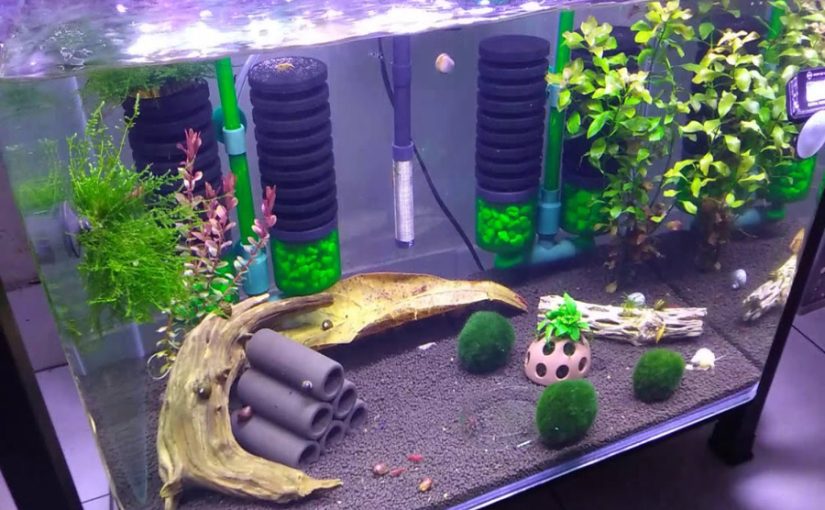Table of Contents
- Introduction
- The Benefits of Having Freshwater Shrimp in Your Aquarium
- Key Factors to Consider When Setting Up a Freshwater Shrimp Aquarium
- How to Choose the Right Shrimp Species for Your Aquarium
- Tips for Maintaining a Healthy Freshwater Shrimp Aquarium
- Conclusion
Introduction
Freshwater shrimp are an incredible addition to any aquarium. Not only do they bring a burst of color and activity, but they also help keep your tank clean by consuming algae, detritus, and leftover food. To ensure your shrimp thrive, it’s essential to set up the right environment. In this article, we’ll guide you through the key factors to consider when setting up a freshwater shrimp aquarium and offer tips for maintaining a healthy environment for these fascinating creatures.
The Benefits of Having Freshwater Shrimp in Your Aquarium
Freshwater shrimp offer several benefits to your aquarium, including:
- Natural Algae Control: Many shrimp species, such as Amano Shrimp, are excellent algae eaters. They will help prevent algae from overtaking your tank, keeping your plants and decorations clear.
- Cleaning Up Leftover Food: Shrimp are natural scavengers, meaning they will consume leftover fish food, detritus, and organic waste. This reduces the build-up of unwanted substances in your tank, contributing to a cleaner and healthier aquarium.
- Aesthetic Appeal: Freshwater shrimp come in a variety of vibrant colors, including orange, yellow, red, and black. Their bright colors add visual interest and a lively dynamic to your aquarium.
- Peaceful Nature: Shrimp are generally peaceful creatures and can coexist with other small, non-aggressive fish. They make excellent additions to community tanks.
Key Factors to Consider When Setting Up a Freshwater Shrimp Aquarium
To create the perfect environment for your shrimp, you need to focus on several key factors:
- Tank Size: While shrimp can thrive in smaller tanks, a minimum of 20 liters (5 gallons) is recommended for most species. Larger tanks provide more stability in terms of water parameters and offer more space for shrimp to forage.
- Water Conditions: Freshwater shrimp are sensitive to water quality, so maintaining stable water conditions is crucial. Most shrimp species prefer slightly acidic to neutral water (pH 6.5-7.5), and the water temperature should be kept between 22-28°C (72-82°F). Regular water testing and routine changes will help keep the water parameters stable.
- Filtration: A gentle filtration system is essential for shrimp tanks. Sponge filters are ideal because they provide effective filtration without sucking up the tiny shrimp. Avoid using powerful filters, as they can create too much water movement, which may stress the shrimp.
- Substrate: A fine substrate such as sand or small gravel is best for shrimp tanks. This allows the shrimp to forage for food and detritus. Be sure to avoid large, sharp-edged substrates, as these can damage the delicate shrimp.
- Tank Decorations and Hiding Spots: Shrimp need plenty of hiding spots where they can retreat for safety, especially during molting. Add live plants, driftwood, and rocks to create a natural environment that mimics their native habitat. Live plants also provide biofilm, which serves as a natural food source for the shrimp.
How to Choose the Right Shrimp Species for Your Aquarium
When selecting shrimp for your tank, consider the following:
- Species: Choose shrimp species that are compatible with your tank’s water conditions and the size of your tank. For example, Orange, Yellow, Red, Black, and Rilli Shrimp are great choices that are hardy and easy to care for.
- Water Parameters: Make sure the species you choose can thrive in the specific water conditions of your tank. Some species are more tolerant of varied conditions, while others, like Crystal Red Shrimp, require very stable and specific water parameters.
- Tank Mates: Freshwater shrimp are peaceful and do well with other small, non-aggressive species. Avoid keeping shrimp with larger fish that may view them as food. Always consider the size and temperament of potential tank mates when choosing shrimp.
Tips for Maintaining a Healthy Freshwater Shrimp Aquarium
- Regular Water Changes: Freshwater shrimp are sensitive to poor water quality. Regular water changes (10-20% per week) help maintain optimal water conditions and prevent the buildup of harmful substances like ammonia and nitrates.
- Avoid Overfeeding: Shrimp are scavengers and will eat leftover food and detritus. However, you can supplement their diet with high-quality shrimp pellets, blanched vegetables, and occasional protein sources like bloodworms. Be sure not to overfeed, as uneaten food can quickly degrade water quality.
- Monitor for Stress and Molting: Shrimp molt regularly to grow, and this process can make them vulnerable to stress. Ensure there are plenty of hiding spots in the tank for them to retreat to during molting. Monitor their behavior for signs of stress, such as hiding for long periods or losing color.
Conclusion
Setting up the right environment for your freshwater shrimp is key to ensuring they thrive in your aquarium. By providing clean water, plenty of hiding spots, and the right water conditions, you can create a healthy, vibrant tank where your shrimp can flourish. Whether you choose Orange, Yellow, Red, Black, or Rilli Shrimp, these beautiful creatures will enhance your aquarium’s beauty and contribute to its overall health. For a selection of high-quality freshwater shrimp, visit cuaquatics.co.uk for all your aquarium needs.


